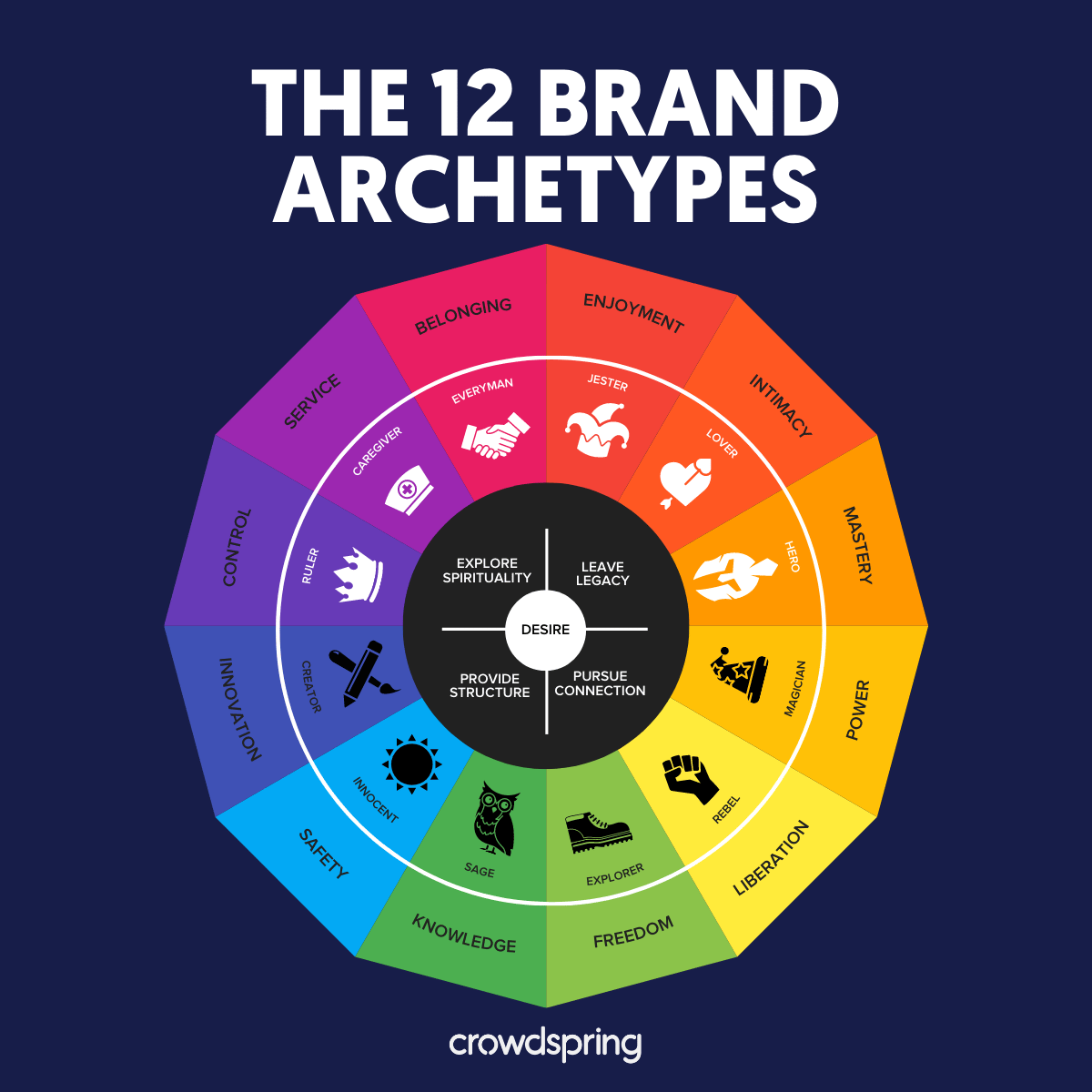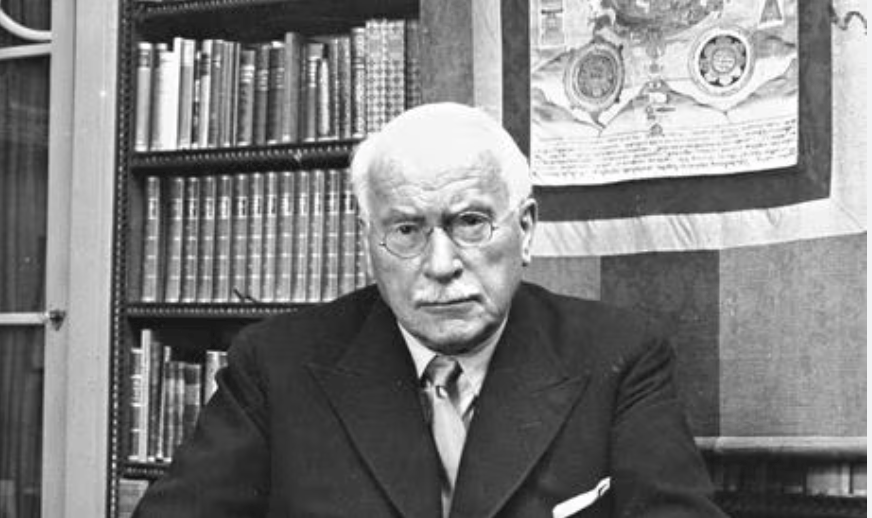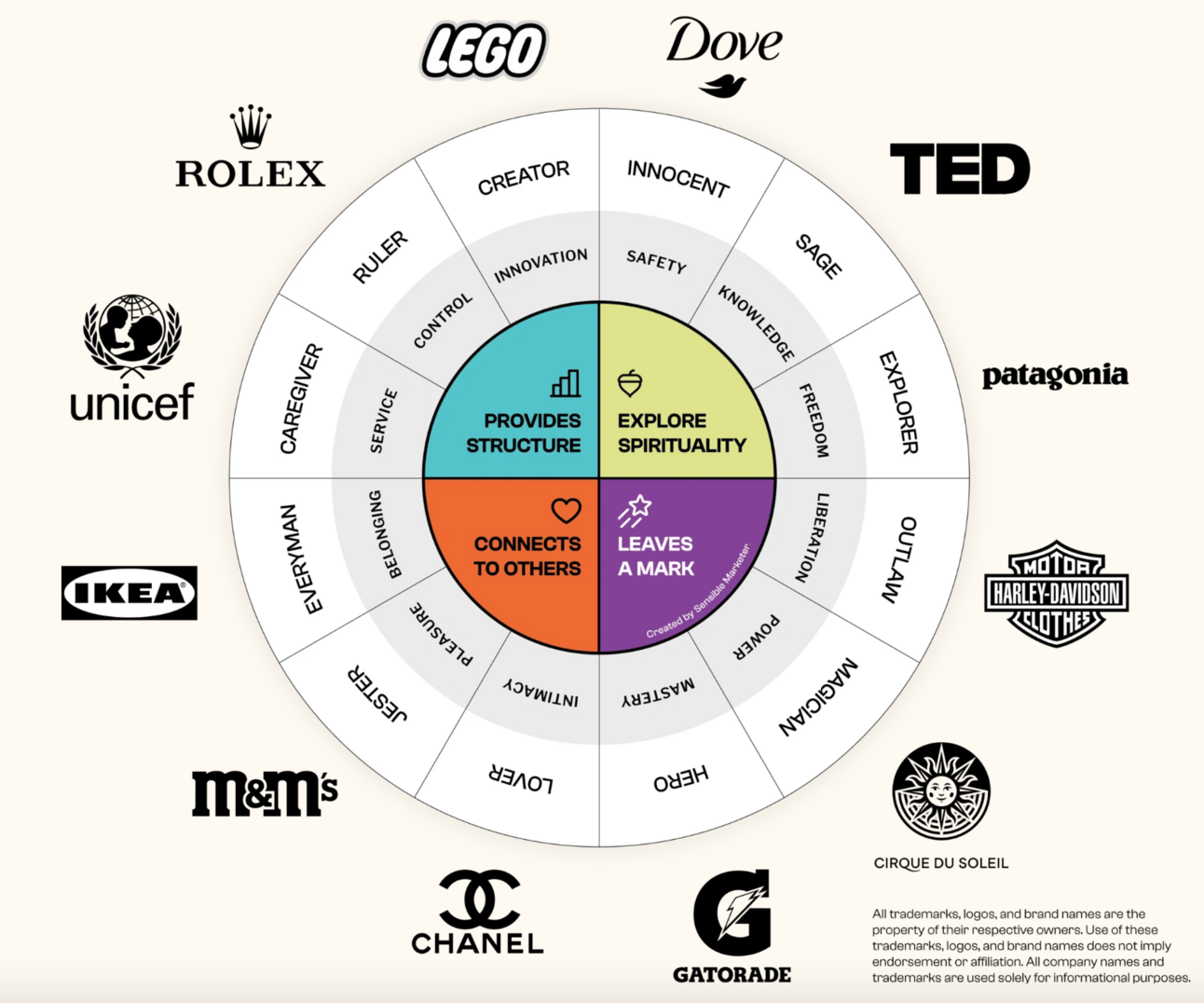- Minimum Viable Brand
- Posts
- What Are Brand Archetypes (And What Archetype Is Your Brand)?
What Are Brand Archetypes (And What Archetype Is Your Brand)?
Because your brand isn’t just what you say—it’s the role you play.

Some brands are seen as leaders. Others, as rebels. Some feel like wise guides. Still others, like playful friends.
That’s not by accident. It’s by design—and often guided by something called brand archetypes.
If you’ve ever felt like your brand’s voice or personality is a little fuzzy—or worse, totally generic—this framework can help you tighten it up.
Let’s walk through what archetypes are, why they work, and how to find the one that best fits your brand.
What are brand archetypes?
Brand archetypes are rooted in psychology—specifically, the work of famed Swiss psychiatrist and psychoanalyst Carl Jung. He proposed that humans instinctively recognize a set of universal character types that show up in stories across time and culture.
Modern brand strategists have adapted this into a system of 12 core archetypes, each representing a specific personality, set of values, and type of emotional appeal. Think of them as narrative shortcuts. They help audiences instantly grasp who a brand is, not just what it does.
Today, archetypes are used to guide everything from messaging and tone to visual identity and positioning. They provide creative guardrails and help brands show up with consistency—whether you're writing web copy, designing a homepage, or running an ad campaign.
And when used well, it helps people feel like they know you instantly.

Carl Jung’s theory of universal character types—recurring figures across cultures and eras—laid the foundation for today’s brand archetypes.
Why they matter, especially for startups
In a world where first impressions happen fast and brand loyalty is rare, clarity is everything.
Choosing an archetype gives your brand:
A consistent personality
A clearer voice and tone
A filter for design and messaging choices
A way to emotionally connect with your audience
A shortcut to standing out in crowded markets
Think of it as the character your brand is playing in the mind of your customer. When people know what kind of “character” you are, they trust you faster and remember you longer.
The 12 classic archetypes (with examples)
Here’s a quick overview of the 12 major archetypes and examples of brands that embody them:
# | Archetype | How It Shows Up in the World | Brand Examples |
1 | The Hero | Inspires action, pushes limits, celebrates achievement and strength | Nike, Gatorade |
2 | The Outlaw | Breaks the rules, challenges the norm, offers rebellion and freedom | Harley-Davidson, Liquid Death |
3 | The Explorer | Embraces adventure, independence, and the call to go beyond boundaries | Patagonia, Jeep |
4 | The Sage | Pursues truth, insight, knowledge, and understanding | Google, The New York Times |
5 | The Magician | Transforms the ordinary into the extraordinary, makes the impossible feel real | Apple, Disney |
6 | The Creator | Builds, imagines, expresses—driven by innovation and design | Adobe, Lego |
7 | The Caregiver | Protects, nurtures, and puts others first—built on compassion and reliability | Johnson & Johnson, The Honest Company |
8 | The Everyman | Relatable, grounded, friendly—makes everyone feel included | Target, IKEA |
9 | The Lover | Creates emotional connection, passion, beauty, or indulgence | Godiva, Chanel |
10 | The Jester | Brings joy, humor, playfulness—doesn’t take itself too seriously | Duolingo, Old Spice |
11 | The Ruler | Conveys control, leadership, excellence, and authority | Rolex, Mercedes-Benz |
12 | The Innocent | Offers simplicity, purity, optimism, and a sense of safety | Coca-Cola, Dove |
You don’t have to match one perfectly—but finding your primary archetype helps clarify your brand’s emotional center.
How to find your brand’s archetype
Here’s a simple 3-step exercise to figure out where your brand lands:
Ask yourself: how do you want people to feel when they engage with you?
Safe? Energized? Inspired? Seen? That feeling is your emotional anchor.What role do you play in your customers’ lives?
Are you a trusted guide? A rebellious alternative? A creative spark? Your function often hints at your archetype.Look at your current messaging, tone, and visuals.
What kind of energy is your brand already projecting? Sometimes your archetype is already showing—you just haven’t named it yet.
If you’re still not sure, narrow it down to two or three options, and ask: Which one feels most true? Which one feels most useful for where we’re going?
Pro tip: You can always start with one archetype and evolve. Many early-stage brands often begin as an Everyman or Explorer, then become more Sage- or Ruler-like as they grow.

Most brands align with one of 12 core archetypes—each reflecting a distinct personality, value set, and type of emotional pull.
Final thought
Over the years, I’ve worked with enough early-stage teams to know this: the brands that feel consistent and trustworthy almost always have an archetype baked in—even if they didn’t realize it at the time.
Once you name it, everything from your tone to your design choices starts clicking into place.
So remember: your brand isn’t just a product or a pitch. It’s a personality. A presence. A promise that people feel.
In other words, an archetype.
Archetypes make your brand more consistent, more memorable, and more emotionally resonant.
So ask yourself:
Who is my brand in the story my customers are living?
Find that character—and play it all the way through.
Best,
Edwin
What did you think about this week's newsletter? |